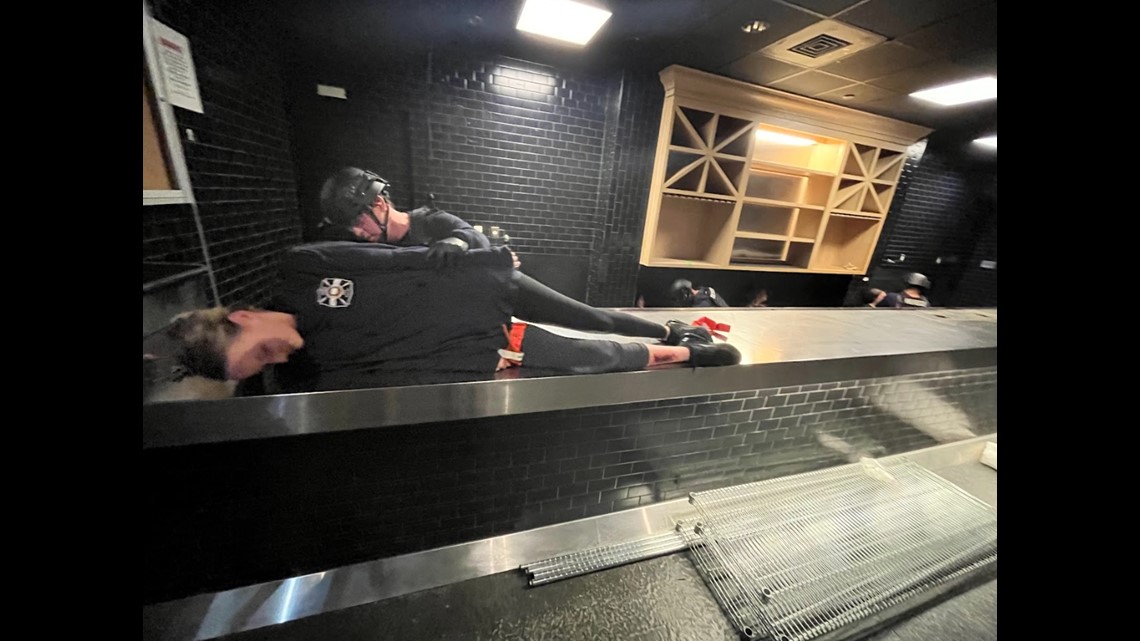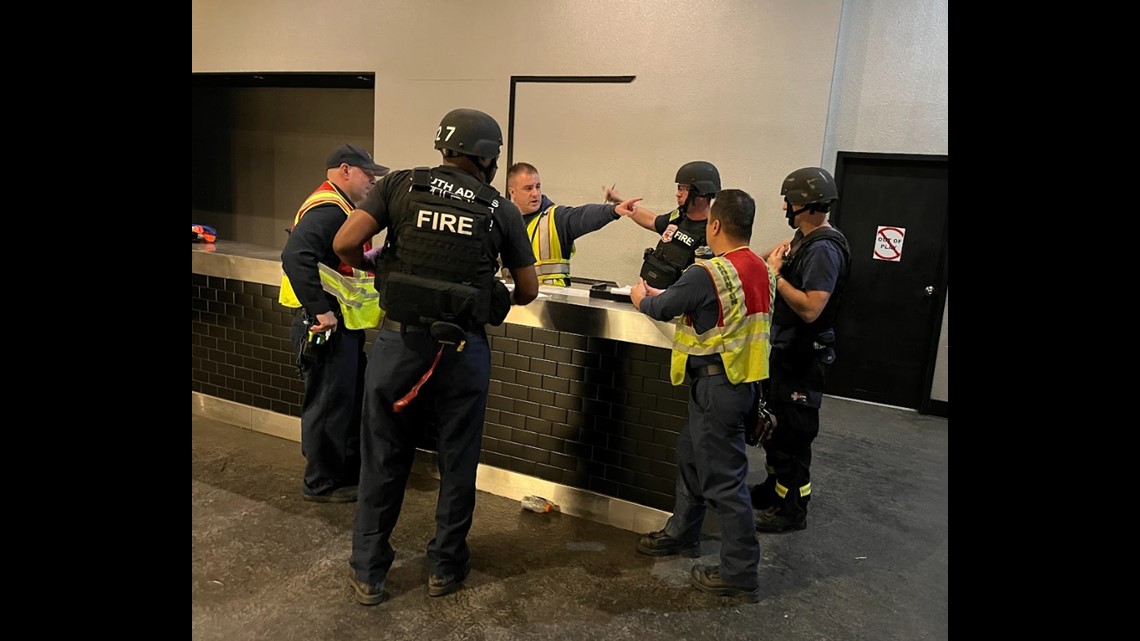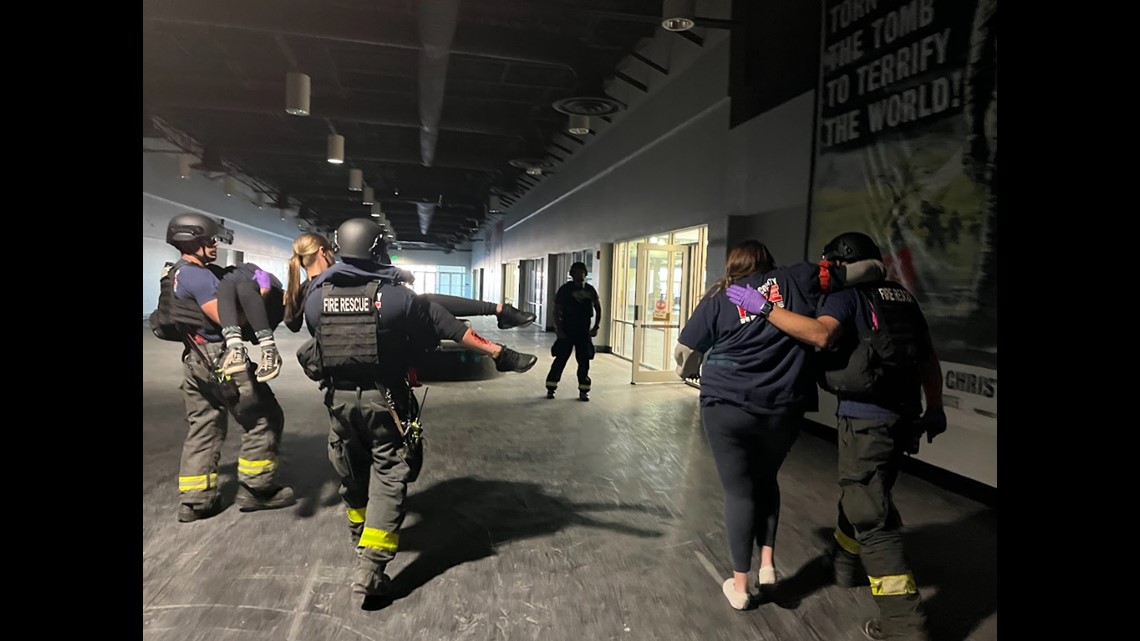DENVER — Several fire departments near Denver trained for how to handle a mass shooting situation for two weeks. The training comes as the U.S. added yet another mass shooting to the nearly 600 so far this year, this time in Lewiston, Maine.
First responders were put in a simulation to work together and train on best practices for this kind of tragedy. About two dozen volunteers helped firefighters get the real-life experience they need to best help the community in case of a real event.


“It does look very real, almost surreal looking at things like this like knowing it can happen,” said Isabella Garcia, a volunteer victim. “After I sat there for a second, I really took it in and was like ‘wow, this could happen to me.’”
Seven fire departments in the North Metro region spent the last two weeks preparing for an active shooter situation:
“Because we are a lot of smaller fire departments in the North Metro area, we actually function like one fire department, even though we have different boundaries and wear different patches,” said Theo Gonzales, Thornton Assistant Chief of EMS.
Gonzales said it's important for all first responders to be on the same page. “Using the same terminology, using the same protocols, medically, and treating patients and talking on the radio and everything is consistent and as alike as possible,” he said.
Gonzales called it "coordinated chaos."


“We do want to expose our crews and our people to that level of stress, so that when they operate under it, they’re used to that, it’s called stress inoculation,” said Gonzales. “There's a lot of people talking to each other. We have a lot of different radio channels that we are talking to, and you saw we had about 40-50 firefighters here on the scene, and it takes all those concerted and coordinated efforts to get one patient out. So you saw we extricated about 23 victims.”
The firefighters are building on lessons that have hit too close to home.
“What we found with Columbine is those people really just needed somebody to hold pressure on a wound and maybe place some tourniquets, simple basic level care,” said Gonzales.


No one can control the future.
“It’s impossible to control all the numerous variables that our crews are going to run into,” said Gonzales.
First responders are practicing what they can control, which is their response.
“We want to give them that foundational training so they can go out and apply those ABCs, 123s, to basically anything they’re going to see out there,” said Gonzales.
“So awful we have to practice things like this unfortunately, but again very necessary,” said Garcia.
“They can sleep very well at night because we have incredibly well trained first responders that are doing these types of trainings all over the metro area,” said Gonzales.


SUGGESTED VIDEOS: Latest from 9NEWS

